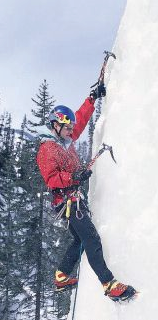When you're lead climbing, the most common way for the rope to hang naturally, if you don't do anything special, is usually between your legs. Is this OK on rock? On ice? Why or why not?
On rock, the impression I get is that it's fine, as long as you don't back-step the rope. I have heard people in the gym tell people not to do it, but I suspect they're either wrong or oversimplifying. Flipping through some rock climbing videos on youtube, I pretty quickly came across examples of extremely skilled sport climbers with the rope in this position, e.g., https://www.youtube.com/watch?v=5P5akoQ_eNI#t=380 .
On ice, are you supposed to keep the rope over one thigh because it makes it less likely that you'll damage it with your crampons or get your crampon points tangled in it? I've had a small amount of instruction and experience ice climbing, but I don't do it often enough to remember much of the technique from one time to the next.


 Images from Will Gadd's book, "
Images from Will Gadd's book, "